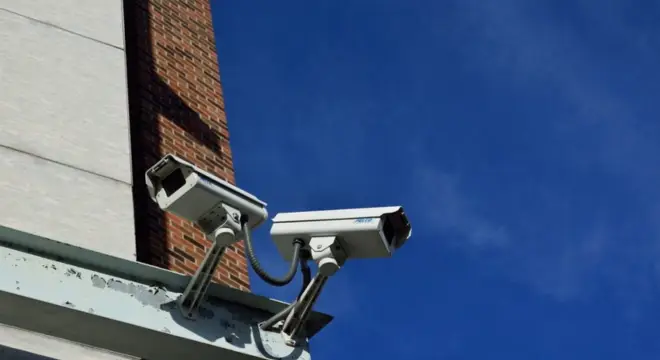Peoria Officers Arrest Additional Suspect in Fatal Home Invasion Case
I still remember reading about the Peoria home invasion that shook Lexington Hills Apartments on the night of November 22, 2025. You can almost picture it: police rushing to the scene after reports of gunfire, neighbors frightened, and chaos unfolding in a place many consider safe.
By the time officers arrived, a 17-year-old had already been shot and later pronounced dead, while another man was hospitalized with serious injuries.
Over the next few days, the investigation revealed a shocking twist: this wasn’t just a random shooting. Police discovered that the 17-year-old who died, Matthew Day, had been coordinating with another juvenile suspect to stage a home invasion — a plan that went tragically wrong.
Then, on November 26, authorities arrested 23-year-old Reginald Flemister-Tolson, who now faces charges of home invasion, armed robbery, and aggravated battery with a firearm.
As I followed these updates, it became clear that this case isn’t just about one violent night; it’s a stark reminder of how quickly things can spiral out of control, the risks of juvenile involvement in serious crime, and the challenges communities face in staying safe. In the sections ahead, I’ll break down the timeline, the investigation, and what residents like you can learn from this incident — so you can understand not only what happened but why it matters.
Timeline of the Peoria Home Invasion and Shooting
Let’s walk through exactly what happened that night, step by step, because understanding the timeline is key to seeing how quickly things escalated.
On November 22, 2025, police were called to the Lexington Hills Apartments on West Oakcrest Drive after reports of shots fired. According to the Peoria Police Department’s official Facebook post, officers found a 17-year-old male, Matthew Day, unresponsive with gunshot wounds to the torso. Despite emergency measures and transport to the hospital, he was pronounced dead.
A second victim, a 21-year-old male, was also found with gunshot wounds to the legs. He was hospitalized and is currently in stable condition. Police deployed a full response team — patrol, detectives, off-duty officers, and even SWAT — to secure the area and investigate.
Two search warrants were executed, and evidence was collected from the scene. Officers also canvassed the neighborhood for anyone with tips or security footage that could help the investigation.
By November 24, detectives interviewed the 17-year-old suspect. He was taken into custody and charged with aggravated battery, home invasion, and armed robbery. The investigation revealed that he had coordinated with Matthew Day to stage the home invasion, according to messages found on his phone. The case was later updated on November 26, when 23-year-old Reginald Flemister-Tolson was arrested without incident and faces similar charges.
Situations like this remind me of the Kansas incident where a child’s quick thinking during a home invasion played a key role in the suspects’ arrest.
How the Home Invasion Escalated to Fatal Shooting
When you look at the events through the lens of planning versus outcome, the case takes on a sobering perspective. This was not a spontaneous act; according to PJStar reporting, messages on the juvenile suspect’s phone showed coordination with Matthew Day to make the invasion appear staged. The plan involved pretending the juvenile suspect was a victim, but the execution went horribly wrong.
Shots were fired during the home invasion, resulting in the death of Matthew Day and injuries to the 21-year-old man. It’s a stark reminder that even “planned” crimes can spiral out of control. As I think about this, it’s not just about law enforcement response; it’s about how risky these situations are for everyone involved — the perpetrators, the victims, and the neighbors who witness or hear the violence.
Unfortunately, fatal outcomes are not uncommon in home invasions, as seen in a recent San Francisco case where a burglary turned deadly, leaving one person dead
Investigation Details and Police Response
Following the shooting, Peoria police launched a comprehensive investigation. Officers executed court-authorized search warrants, collected evidence, and canvassed the area for witnesses and additional video footage. According to the official Facebook update, detectives remain in contact with the public for tips, and anonymous reports can be submitted via Tip411 or Crimestoppers.
Police emphasized that all suspects and arrestees are presumed innocent until proven guilty. Still, the intensity of the investigation — multiple warrants, SWAT involvement, and neighborhood canvassing — shows just how seriously authorities treat violent home invasions.
This section is important because it reassures you that law enforcement is methodical and thorough, while also demonstrating the level of resources required to handle cases like this.
Legal Context — Charges and Juvenile Considerations

The legal side of this case is complicated, but crucial to understand. The 17-year-old suspect faces charges of aggravated battery, home invasion, and armed robbery, and the State’s Attorney plans to file a motion to transfer him to adult court. Meanwhile, 23-year-old Reginald Flemister-Tolson faces similar charges, including aggravated battery with a firearm.
Illinois law treats violent home invasions very seriously, and juvenile transfer to adult court can significantly change the consequences. For residents following this case, it’s a reminder of the serious legal stakes involved, especially when minors are involved in violent crimes.
Communities often feel the ripple effect of such violence, much like residents in Kendall who were shaken when a home invasion turned deadly, leaving one man killed and three suspects at large.
Impact on Lexington Hills Community and Peoria Residents
I can only imagine the fear residents felt that night. For people living in the Lexington Hills Apartments and nearby areas, the shooting wasn’t just news — it was a personal threat. The swift police response and neighborhood canvassing were necessary, but the emotional impact lingers.
This case also shines a light on broader community concerns: juvenile involvement in violent crime, neighborhood safety, and the ripple effects of a single home invasion. Residents now face increased awareness of potential dangers, and the case emphasizes the importance of vigilance and community cooperation.
If you want to get quick updates on local incidents and safety alerts directly on your phone, there’s a WhatsApp channel sharing verified news in your area — it’s a simple way to stay informed.
Safety Lessons for Residents — How to Protect Yourself
After following this case, one thing becomes clear: a violent home invasion can happen anywhere, and the consequences are severe. If you live in Peoria—or any area where crime is a concern—there are practical steps you can take to reduce risk.
First, think about home security. Strong locks, functioning alarms, and surveillance cameras aren’t just gadgets—they’re deterrents. Even something as simple as ensuring windows and doors are locked can make a difference.
Next, neighborhood awareness matters. Talk to your neighbors, report anything suspicious, and participate in community watch programs if available. Police canvassing in Lexington Hills shows how important local cooperation is in investigations.
Finally, understand that juvenile crime can escalate quickly. If you’re a parent, guardian, or involved in youth programs, early intervention and guidance can prevent minors from making life-altering decisions. Awareness and vigilance are the best tools you have to keep yourself, your family, and your neighbors safe.
This section is important because it gives readers real, actionable takeaways. It moves beyond reporting and shows you how to apply lessons to your own life.
What to Watch Next — Future Implications of the Case
Even though arrests have been made, this story isn’t over. The investigation remains active, and several elements could shape Peoria’s community and legal landscape in the coming months.
The trial outcomes for both the juvenile suspect and Reginald Flemister-Tolson will set precedents for how violent home invasions are prosecuted in Peoria. Whether the juvenile is transferred to adult court is particularly significant.
Residents should also watch for additional arrests or charges, as ongoing investigations sometimes reveal accomplices or related crimes. The case may influence policing strategies, neighborhood patrols, and community awareness campaigns.
Finally, this incident highlights the need for policy and preventive measures—from better community engagement to stricter laws addressing juvenile involvement in serious crimes. The lessons learned here could help prevent future tragedies.
This section is important because it keeps you informed about the evolving case and its broader implications. It also encourages you to think about how communities and individuals can respond proactively to threats.
For more stories on home invasions and crime safety tips, visit our Home Security category for detailed coverage and practical guides.
Disclaimer: All suspects mentioned in this article are presumed innocent until proven guilty in a court of law. The information provided is based on official police reports and reputable news sources. This content is for informational purposes only and does not constitute legal advice.


